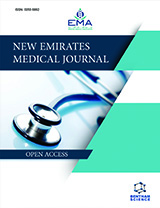Abstract
Background: COVID-19 has a significant impact on lives worldwide. Owing to the adverse effect of this pandemic, there has been a major shift from in-person learning activities to virtual learning. Different methods of virtual learning or e-learning, such as online classes and webinars, have emerged rapidly.
Objective: The aim of this study is to identify the perceptions of healthcare professionals regarding e-learning during the COVID-19 pandemic.
Method: An online survey was conducted using Microsoft Forms sent via a text link to mobile phones and emails to healthcare professionals. The questionnaire had multiple-choice questions and five-point scaling to determine perceptions about virtual learning. Data in the form of responses were collected, analyzed, and summarized as mean ± standard deviation and percentage.
Results: Responses were received from a total of 410 participants, out of which 240 (58.54%) were females, and 170 (41.46%) were males. Among all participants, 294 (71.71%) were doctors. A vast majority of participants (90%) attended online webinar/e-conferences since the pandemic. The mobile phone was the most commonly used device for e-learning. More than half of the participants opined that in-person meetings are more effective than virtual meetings. In terms of medical learning, 40.48% of participants believed that virtual conferences are more convenient compared to conventional in-person attendance. According to 42.2% of participants, lack of personal interaction in virtual meetings affected their ability to acquire knowledge and experience.
Conclusion: Our survey demonstrated the acceptance of virtual learning by healthcare professionals as a new learning method. The majority of participants seem willing to adapt to this new medium.
Keywords: COVID-19, E-learning, Digital education, Virtual learning, Perceptions of e-learning, Webinars.
[http://dx.doi.org/10.1016/j.jiph.2020.07.019] [PMID: 32855090]
[http://dx.doi.org/10.3171/2020.9.FOCUS20634] [PMID: 33260124]
[http://dx.doi.org/10.1016/j.jsurg.2020.06.005] [PMID: 32576451]
[http://dx.doi.org/10.1007/s40670-021-01231-z] [PMID: 33649712]
[http://dx.doi.org/10.7759/cureus.8015] [PMID: 32399375]
[http://dx.doi.org/10.1016/S1473-3099(20)30226-7] [PMID: 32213335]
[http://dx.doi.org/10.1093/asj/sjaa123] [PMID: 32453817]
[http://dx.doi.org/10.4103/ijo.IJO_3136_20] [PMID: 33727465]
[http://dx.doi.org/10.1016/j.jiph.2020.11.007] [PMID: 33341480]
[http://dx.doi.org/10.12669/pjms.36.COVID19-S4.2785]
[http://dx.doi.org/10.1007/s00268-020-05574-3] [PMID: 32409866]
[http://dx.doi.org/10.1080/13562510600874276]
[http://dx.doi.org/10.1177/2382120520973212] [PMID: 33283049]






























